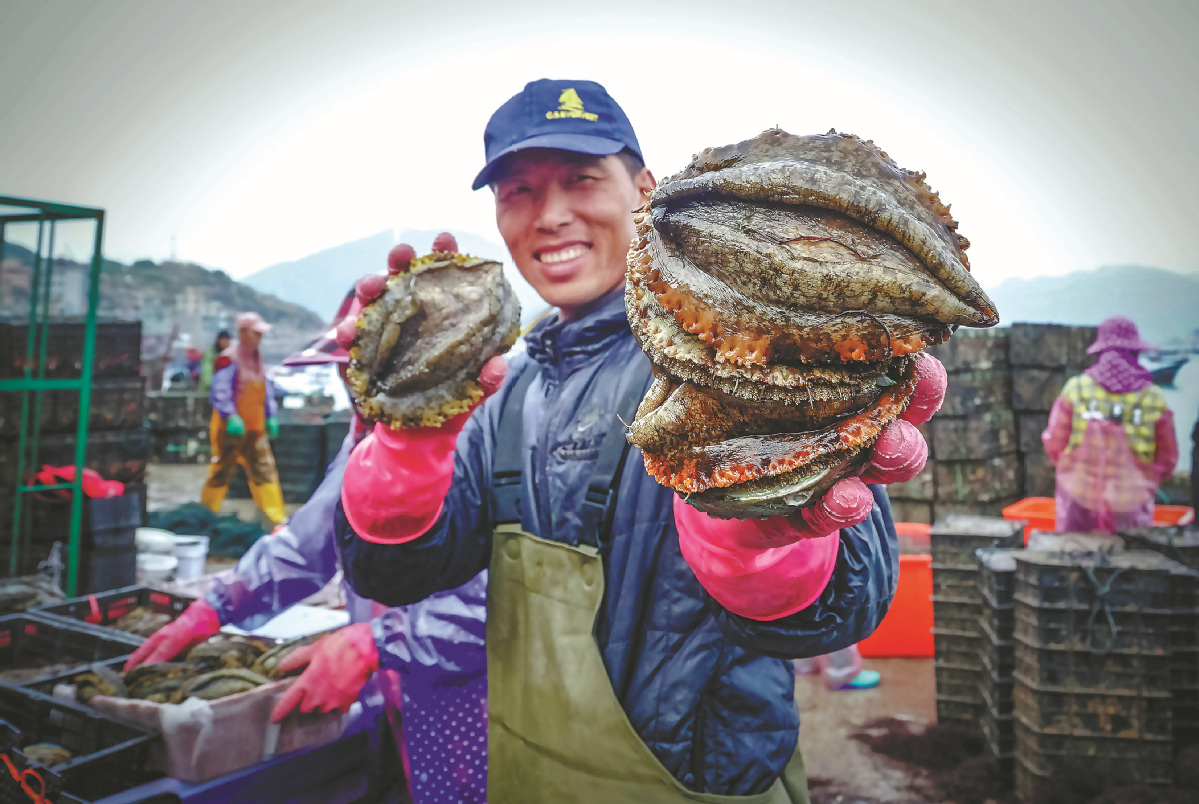A sea change for abalone
Lianjiang county in Fujian province has revolutionized farming of the mollusk to create a thriving industry and affordable delicacy
 Fisherman showcases abalones in Lianjiang county, Fujian province. ZHENG CHENGLE/CHINA DAILY
Fisherman showcases abalones in Lianjiang county, Fujian province. ZHENG CHENGLE/CHINA DAILY
Once considered a luxury reserved for special occasions, abalone has long been cherished for its tender texture and exquisite flavor. However, due to limited supply and high prices, it remained out of reach for many. Recognizing the potential for growth in the aquaculture sector, Lianjiang county in Fujian province embarked on a journey to revolutionize abalone farming.
By investing in research and development, experts collaborated to develop new abalone strains that are disease-resistant, temperature-resilient and large in size. These improved varieties not only thrive in various environments but also yield higher-quality abalone with enhanced taste and texture. To ensure the success of this endeavor, the government also offered subsidies to the local abalone industry.
The collective efforts have borne fruit as the abalone industry has prospered across the region. In 2020, China's abalone production surpassed 200,000 tons, accounting for more than 85 percent of the world's total. According to market-research firm Zhiyan Consulting, abalone production in Fujian accounted for 79.2 percent of China's total production in 2021 and Shandong province for 16.3 percent.
With increased production and improved quality, the market saw a significant drop in prices, making abalone more accessible to a broader range of consumers. More people can now savor its unique flavors and reap the nutritional benefits more frequently, fostering economic growth and rural vitalization.




